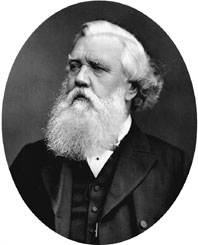

 | Page 807 |  |
History of Capital. Rīga: Museum of History of Rīga and Navigation. 1772–1973.
Zagorska, I. 1996. The First Radiocarbon Data from the Stone Age Burial Field in Zvejnieki—The Application Methods in Archaeology. Helsinki.
Zagorskis, F. 1987. Stone Age Burial Field. (In Latvian.) Rīga.
Zariņa, Anna. 1970. Cloth of Ancient Letgallians (Seventh–Thirteenth Centuries) (In Latvian.) Rīga.
———. 1988. Cloth of Livs Tenth–Thirteenth Centuries. (In Latvian.) Rīga, 1988, 107 pages.
———. 1999. The Ancient Clothes of Latvians (Seventh–Seventeenth Centuries). (In Latvian.) Rīga.
Zariņa, Anna, et al. 1974. Latvijas PSR arheolog‘ija. Rīga.
Zemītis, G. 1996. “The Rampart of Hillfort Daugmale.” Arheolog‘ija un Etnogrāfija 18: 118–223.
———. 1999. Department of Archaeology at the History Museum of Latvia—Inside Latvian Archaeology. Gotteborg.
First dug in 1868 by édouard lartet as part of his Dordogne campaign with henry christy and subsequently explored by denis peyrony and françois bordes, these two adjacent rock shelters in the vicinity of Les Eyzies in the Dordogne have, between them, yielded a complete sequence of Upper Paleolithic industries in southwestern france. The Laugerie sites are type sites for the Aurignacian, Gravettian, Solutrean, and Magdalenian periods, and there is a particularly fine representation of Magdalenian art objects in Laugerie Basse.
See also
References
Gamble, C. 1986. The Paleolithic Settlement of Europe. Cambridge University Press.
(1817–1894)
Born in Paris and raised in switzerland, Layard studied law and then practiced for six years, at the end of which he set out to ride overland to Ceylon. He got no further than iran, where he spent a year with a group of nomads. Arriving in Baghdad in 1842 he was sent back to Constantinople (later Istanbul) to brief the British Ambassador on his travels. On the way he visited what was thought to be the ancient city of nineveh, at Khorsabad, where French diplomat paul emile botta was excavating.

Austen Henry Layard
(Ann Ronan Picture Library)
After several years as a diplomatic agent in Turkey Layard persuaded the British Ambassador Sir Stratford Canning to sponsor his excavation of the mounds in northern mesopotamia—in competition with the French. In 1845 at the mound of nimrud Layard discovered several Assyrian royal palaces, one of which was that of Ashurnasirpal II, and bas-reliefs similar to those discovered by Botta at nearby Khorsabad. Both Layard and Botta were only interested in the most spectacular finds of statuary and portable architectural remains to be displayed in their national museums. Tunneling and trenching around these larger pieces destroyed much other archaeological information and smaller or fragile artifacts.
In 1847 Layard began shipping his finds back to London where reports of them had already caused a sensation. They were put on display in the british museum where they aroused not only great public interest but also further sponsorship
 |  |